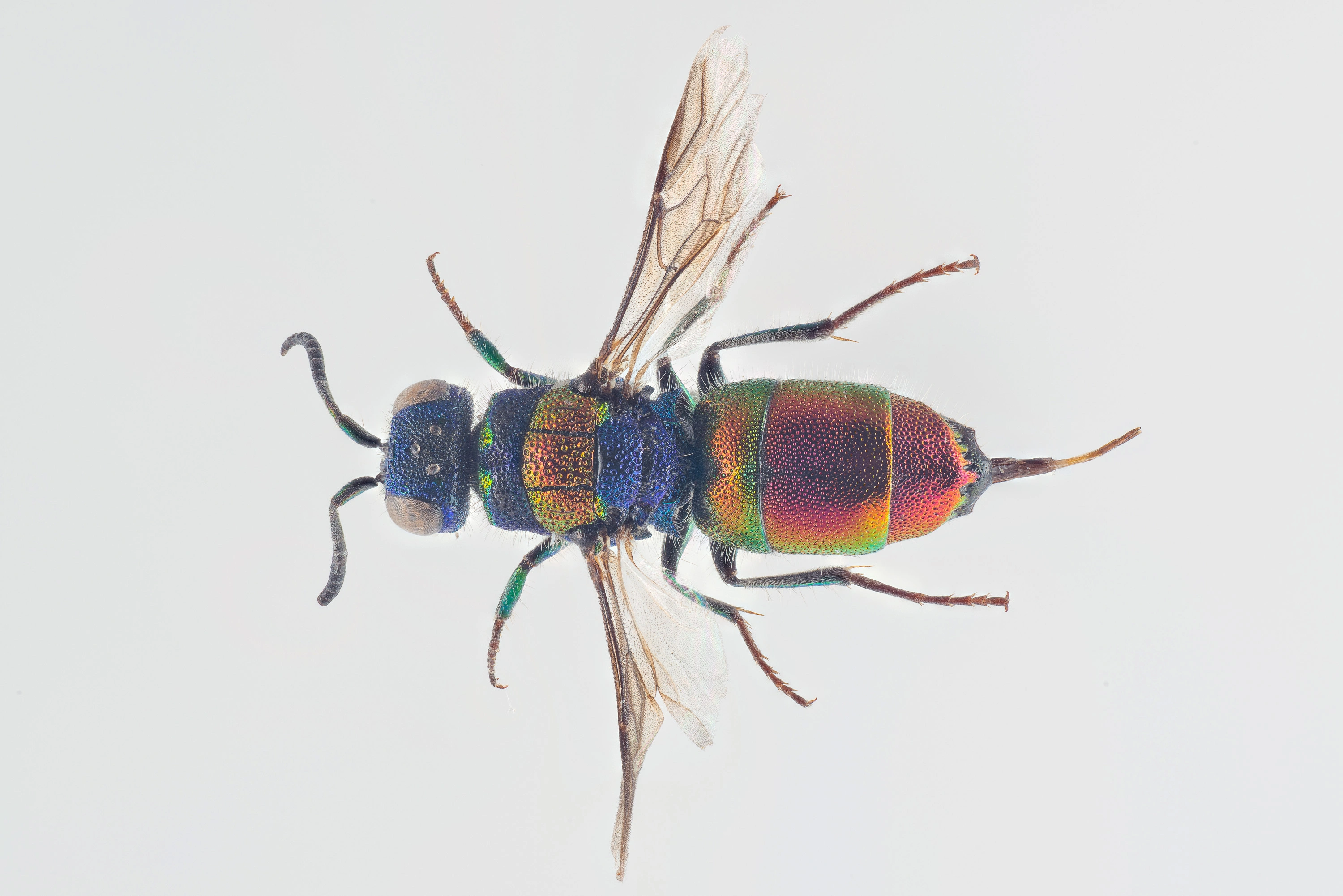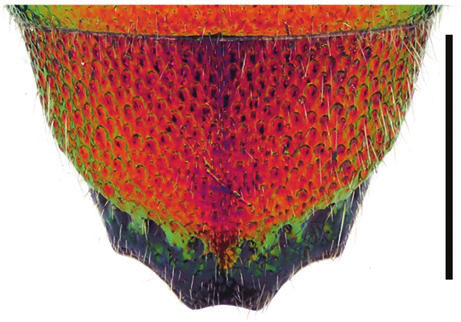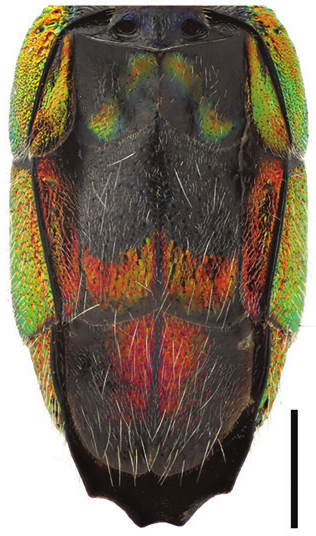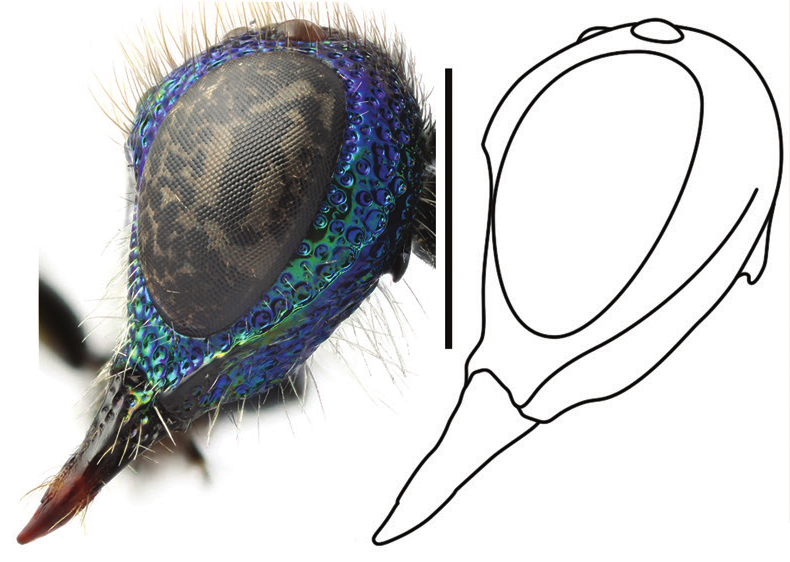Chrysis illigeri
A relatively small species that is common in sandy areas. The hosts are Crabronidae of the genus Tachysphex. Chrysis illigeri has characteristic colour patterns, including red colour of mesoscutum, and the species can only be confused with C. bicolor.
- Innhold
- Diagnosis
- Distribution
- Biology
Diagnosis
Figure 78
T3, dorsal view: C. illigeri ♀. Scale 1 mm.
Figure 111
Metasoma, ventral view: C. illigeri ♀. Scale 1 mm.
Figure 139
Head, lateral view: C. illigeri ♀. Scale 1 mm.
Length 5–8 mm.
The species resembles C. bicolor in colouration, but the anterior margin of the pronotum, the mesoscutum and the metasoma are usually mainly red in the male (not greenish), and the posterior margins of the black spots of S2 are not as oblique in the female (Fig. 111). Compared to C. bicolor, the malar space is longer (Fig. 139), the punctation of T2 is sparser and the metascutellum is not as elevated in profile.
Distribution
Denmark, Estonia, Finland, Latvia, Lithuania, Norway, Sweden. Common.
West Palearctic: Europe (Linsenmaier 1997).
Be aware that the records present in the GBIF map may be misleading for some countries due to unrevised data sets or missing information.
GBIF Taxon: Chrysis illigeri Wesmael, 1839Biology
Habitat: sparsely vegetated sandy areas. Adults occasionally visit flowers of Apiaceae, Asteraceae, Euphorbiaceae and Rosaceae (Linsenmaier 1997, Rosa 2004, our own obs.).
Flight period: late May to late August.
Host: Tachysphex pompiliformis (Panzer) (Crabronidae) (Westrich 1983, Morgan 1984, Saure 1998).



